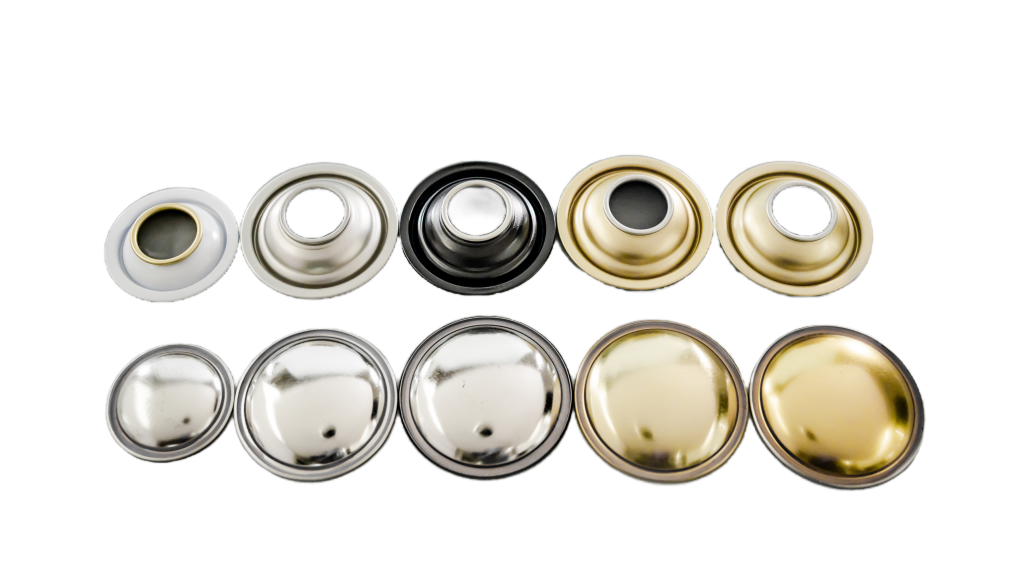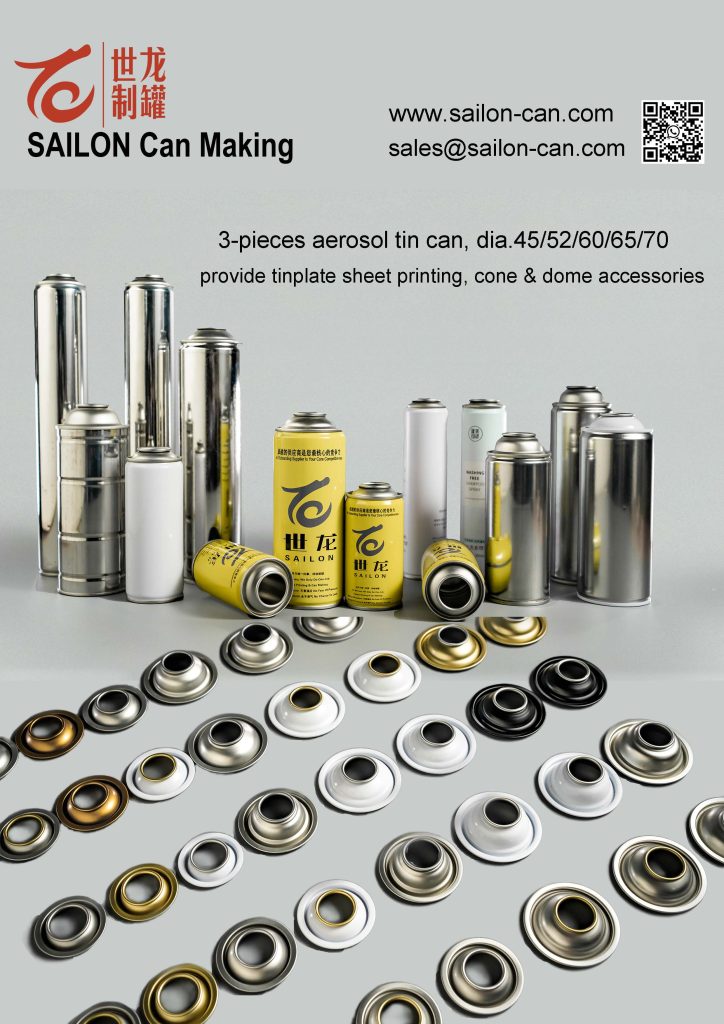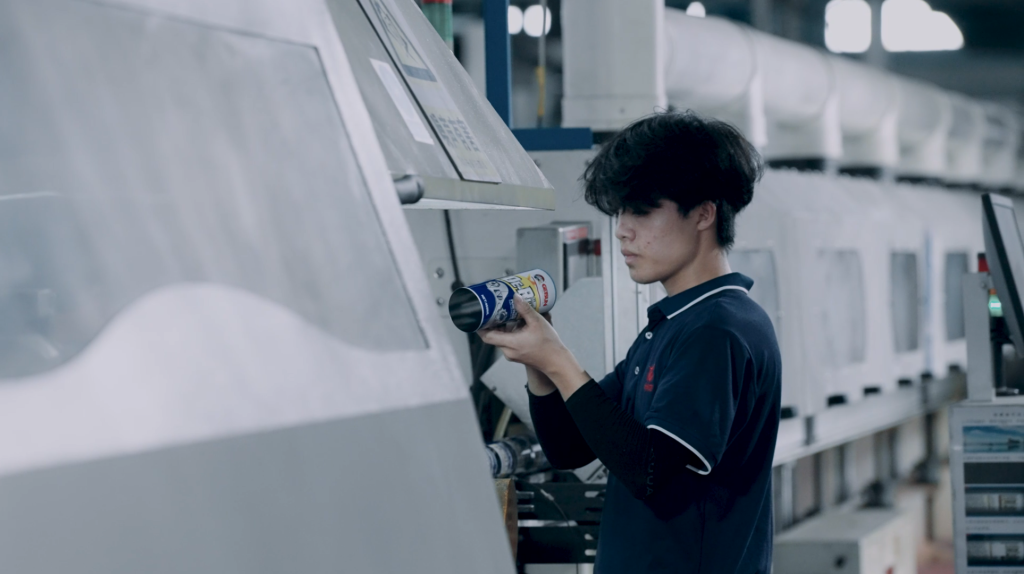In the aerosol industry, “product safety” has always been the core consideration for customers when making choices. As one of the four major components of aerosol products (aerosol cans, valves, liquid formulations, and propellant gases), the quality of tinplate aerosol cans directly determines whether a product can pass market verification. Especially for highly corrosive products like water-based aerosols, insufficient corrosion resistance of the can body may lead to leakage, rusting, or even safety accidents. As a professional custom tinplate aerosol can manufacturer, we integrate the latest 2025 industry standards to break down the 6 core factors affecting tinplate aerosol can quality and answer common questions during customization.
I. 6 Core Factors Affecting Tinplate Aerosol Can Quality (Supported by 2025 Test Data)
1. Tinplate Substrate: The “First Line of Defense” for Quality
The purity of tinplate directly impacts the can’s processability and corrosion resistance. According to 2025 industry data, high-quality tinplate must have impurity content controlled below 0.03%. If impurities exceed 0.05%, the can’s ductility decreases by 15%, making it prone to cracks during manufacturing. Currently, high-end tinplate in China is still mainly imported (e.g., Japan’s JFE, South Korea’s POSCO). However, some small manufacturers use low-quality tinplate with a thickness of less than 0.2mm to cut costs, which may even contain tiny pinholes invisible to the naked eye. For such pinhole-containing cans, the leakage rate can exceed 20% within 3 months after filling with water-based aerosols. Therefore, it is crucial to verify the substrate test report during customization.
2. Can Body Welding & Touch-Up Coating: Avoid Corrosion at “Weak Points”
The weld of tinplate cans is a weak point for corrosion: the tin layer is damaged during welding. If the touch-up coating process is inadequate, water-based liquid formulations will directly contact the exposed iron sheet, leading to a corrosion rate of up to 30% within 6 months. In 2025, the mainstream touch-up coating technology adopts “double-layer epoxy-phenolic coating,” but two points require attention: first, the touch-up coating material must undergo compatibility testing with the customer’s liquid formulation (no abnormalities after soaking for at least 120 hours); second, the welding current must be stabilized between 80-100A. When the current fluctuates by more than ±5A, the probability of cold welding increases by 25%, creating hidden leakage points.
3. Inner Coating Type & Density: Key to Customized Corrosion Protection
For water-based aerosols (except those using DME as propellant), inner coating is the core corrosion protection method. The following table shows mainstream inner coating types and their application scenarios in 2025:
| Inner Coating Type | Temperature Resistance Range | Suitable Liquid Formulation Type | Recommended Testing Items |
|---|---|---|---|
| Epoxy-Phenolic | -20~120℃ | Neutral water-based detergents | Coating adhesion (≥5MPa) |
| Imide-Epoxy | -40~150℃ | High-temperature water-based lubricants | Salt spray resistance (≥500 hours) |
| PVC | 0~80℃ | Low-corrosion daily chemical products | Solvent resistance (no swelling after ethanol soaking) |
Special attention is required: the contact area between the top/bottom lids and the can body weld is prone to coating damage during manufacturing. If a 0.1mm-diameter bubble exists here, the intensity of electrochemical reactions will triple, and can penetration will occur within 1 year.

4. Sealing Quality: The “Final Check” for Sealing Performance
The curl overlap is a core indicator of sealing quality. The 2025 industry standard requires a curl overlap of ≥1.2mm. If it is less than 0.8mm, the probability of micro-leakage surges by 40%. Our customized production line uses fully automatic sealing equipment and samples 50 cans per hour to ensure three indicators—curl overlap, tightness, and flatness—meet standards simultaneously. A previous customer experienced 5% micro-leakage of water-based disinfectant during transportation due to substandard sealing processes at a small factory, resulting in a full batch recall.
5. Leak Detection: The “Mandatory Threshold” for Safety Performance
Aerosol products are flammable and explosive. According to 2025 national new regulations: each can must pass online pressure leak detection (pressure ≥1.2MPa, no pressure drop within 30 seconds of pressure holding). Meanwhile, 0.5% of each batch must undergo random testing for deformation pressure (≥1.8MPa) and burst pressure (≥2.5MPa). Some small factories skip leak detection to save costs; such cans have a 60% higher risk of bursting in high-temperature summer environments and should never be selected.
6. Sealing Adhesive: The “Invisible Seal Guardian”
Sealing between the can body and lid relies entirely on sealing adhesive. In 2025, the industry recommends using “solvent-resistant silicone rubber sealing adhesive,” but it must pass two key tests: first, no swelling or dissolution after 72 hours of soaking in strong solvents (e.g., xylene); second, no decline in sealing performance after 20 cycles of high-low temperature cycling (-30℃~60℃). If there is adhesive breakage, insufficient coating (less than 0.5g per can) during application, the initial leakage rate will exceed 8% directly.

II. 3 Must-Know Questions for Custom Tinplate Aerosol Cans
Q1: Why are water-based aerosols more “selective” about cans than oil-based aerosols?
A: The pH value of water-based liquid formulations is mostly between 4-9, and they contain surfactants, which accelerate the electrochemical corrosion of iron sheets—similar to how “iron soaked in saltwater” rusts faster than “iron soaked in clean water.” Oil-based liquid formulations, however, form an oil film to isolate air, with a corrosion rate only 1/10 that of water-based ones. Therefore, the requirements for inner coating and touch-up coating are more than three times stricter when customizing cans for water-based products.
Q2: How to quickly judge tinplate quality during customization?
A: Here’s a simple method: gently scratch the can body with your fingernail. For high-quality tinplate, the scratch will recover within 10 seconds with no obvious indentation. If the scratch remains or an indentation appears, the substrate hardness is insufficient (below HV150), making it unsuitable for water-based products. Ultimately, it is still necessary to check the substrate’s “impurity content test report” and “tensile test report.”
Q3: Is a thicker can body always better?
A: Not necessarily! Through 100 sets of tests in 2025, we found that for cans used in water-based aerosols, a thickness of 0.23-0.25mm achieves the optimal balance between corrosion resistance and pressure resistance. Excessive thickness (>0.3mm) increases manufacturing costs and may cause “incomplete welding” during welding; insufficient thickness (<0.2mm) reduces pressure resistance, with deformation pressure dropping below 1.5MPa, which fails to meet safety standards.
III. 2025 Customization Recommendations: Choose the Right Can Type Based on Product Characteristics
When selecting tinplate aerosol cans, both the corrosiveness of the liquid formulation and the pressure resistance of the can must be considered:
- For neutral water-based products (e.g., ordinary detergents): Epoxy-phenolic inner coating + 0.23mm substrate is recommended, balancing cost and performance;
- For highly corrosive water-based products (e.g., acidic descaling agents): Upgrade to imide-epoxy inner coating + 0.25mm substrate, and increase the coating thickness to 25μm;
- For products requiring low-temperature storage (e.g., cold-chain disinfection sprays): Low-temperature resistant sealing adhesive (no brittleness at -40℃) is required, and leak detection at the seal should be strengthened.
As a manufacturer with over 20 years of experience in custom tinplate aerosol cans, we provide a full-process service covering “liquid-substrate compatibility testing, can type design, sample production, and mass production.” All products pass SGS testing, and in 2025, we have helped over 30 water-based aerosol customers solve leakage and corrosion problems. For customization needs, please contact us to obtain an exclusive solution!


